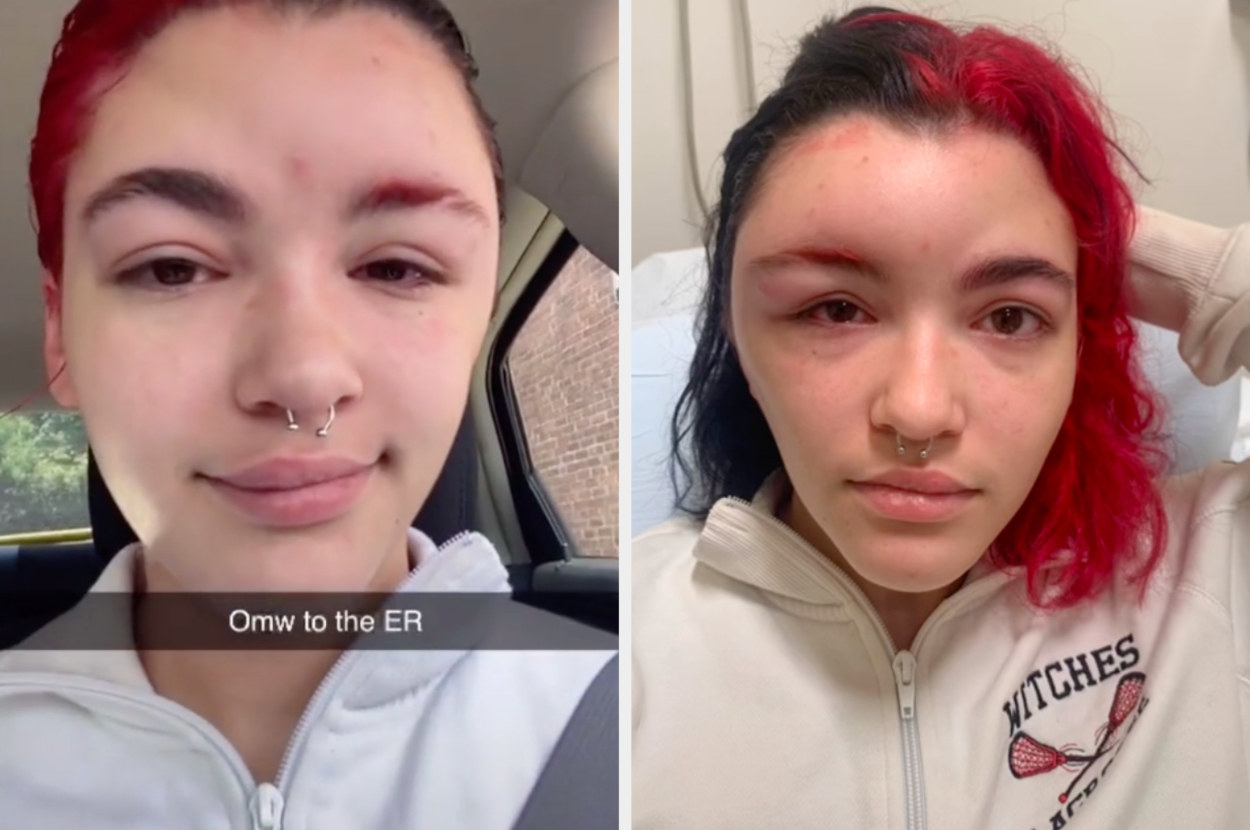Table Of Content

An episode of sensitization may subside with time and recur the next time you use hair color. Sometimes, it takes up to 48 hours for the primary sensitivity to snowball into a full-blown allergic reaction (5). This reaction causes severe inflammation of the skin, also known as contact dermatitis (5). Here are precautionary measures that can help you avoid an allergic reaction to hair dyes. If you’re an allergy sufferer, you are probably always on the lookout when it comes to applying products to your sensitive skin. Hair dye-wise, we get a ton of questions regarding the safety of hair dyeing products and whether you can use them.
Tea Tree Oil
If you have any concerns with your skin or its treatment, see a dermatologist for advice. DermNet does not provide an online consultation service.If you have any concerns with your skin or its treatment, see a dermatologist for advice. Management of PPD dermatitis on other parts of the body may be treated as acute dermatitis; this may include treatment with topical corticosteroids and emollients. Dermatologists and allergy specialists use covered patch tests to determine PPD sensitivity. Fully oxidized PPD is not a sensitiser, but the intermediate, partially oxidised form of PPD may cause contact allergic dermatitis in sensitive individuals. Hair colour preparations containing PPD or its derivatives carry a warning on the packaging recommending a self patch test prior to use of the dye.
Hair dye intolerance
Numerous substances found in hair coloring solutions have the potential to itch the scalp and trigger allergic reactions. The onset of symptoms, which can take up to 48 hours, can range from mild to severe. The most common cause of allergic contact dermatitis resulting from hair dye exposure is a component known as paraphenylenediamine (PPD). PPD is a chemical, just like temporary tattoo ink, printer ink, and gasoline. PPD typically comes in its own bottle along with an oxidizer in boxed hair dye. People who are allergic to it are more likely to experience allergic responses.
Permanent Hair Dyes Without PPD, Ammonia, and Peroxides?

Seek immediate medical assistance if you have a life-threatening allergic reaction, such as anaphylaxis. You may also need to see a doctor if your scalp or skin gets infected if you suffer severe hair loss from hair dye, or if you have a medical condition that affects hair growth and want to color your hair. The most common cause of these allergic reactions is para-phenylenediamine (PPD).
While reactions like Perrette's are rare (about one in 250,000 people are allergic), they can be really serious. The widespread obsession with maintaining a youthful appearance and adhering to cultural beauty standards can put individuals at risk of developing allergies and adverse reactions from hair dye. Reversing these trends poses a significant challenge, as some individuals continue to use hair dyes even after being advised of their allergy risks. Steroid creams may be used to reduce inflammation with swelling and irritation in cases of stronger allergic reactions. Whether it’s a scratchy throat, watery eyes, hives or worse, it’s your body’s way of fighting back.
These dyes contain no PPD, and as a result, they typically don’t work as well or last as long as their synthetic alternatives. On the positive side, however, they also won’t cause the irritation or swelling you’ll get from PPD-based hair dyes. The Good Dye Young semi-permanent hair dye works on all hair types, thick hair, curly hair, or fine hair. Hypoallergenic hair dyes can come in permanent and in semi-permanent hair colors. When it comes to hair dyes, allergic reactions can be halted beforehand, hence the patch test. Symptoms of contact dermatitis from hair dye may include redness, swelling, itching, and dry, flaky skin on the scalp or other areas of the skin that came into contact with the dye.
Hairdressers' skin damaged by hair dyes - Reuters
Hairdressers' skin damaged by hair dyes.
Posted: Thu, 05 Dec 2019 08:00:00 GMT [source]
Q: Do Semi-Permanent Hair Dyes Contain PPD?
You can warm the oil and apply it gently to the scalp for the best results (12). Next time you pick a box of hair dye, read the ingredients list on the back and try to identify the toxic ingredients. Moreover, the unique formulation allows the hair dye to act as a restoring conditioner that helps hydrate and boost fine hair volume.
Coconut Oil
Without proper accreditations and certificates, a hair dye cannot be labeled as hypoallergenic and safe for allergic individuals. The importance of patch testing lies in determining and ultimately preventing allergic reactions before applying a product to your whole head. Contact dermatitis is a type of skin irritation that occurs when the skin comes into contact with certain substances. In the case of hair dyes, contact dermatitis can be caused by the chemicals in the dye, such as colorants or preservatives. Before you decide to drop the dyes on your hair, you must be aware of the allergic reactions they could cause. Hair dyes contain a ton of harmful chemicals that can cause your skin to react adversely.
Safe Hair Dyes for Allergy Sufferers (PPD-Free and Hypoallergenic)
She's also currently training as a freelance makeup artist and is passionate about helping others feel beautiful in their skin. When she's not writing or doing hair, she's usually spending time watching British period dramas. Camelia Smith can color hair, perform keratin treatments, bleach hair, and even cut curly hair. She is our go-to person whenever we have hair treatments and styling questions.
Using permanent hair dye products involves an oxidative process, raising concerns about long-term chemical exposure. Studies explored health impacts and the link between hair dye ingredients and cancer risk. The PPD is usually mixed with peroxide in the dye to alter the hair color. What happens before this reaction is fully complete also makes the PPD more likely to interact with the skin and cause an allergic reaction. Para-toluenediamine (PTD) is another common chemical and allergen in hair dye, although it's generally better-tolerated than PPD, according to Medical News Today. Both PPD and PTD can be found in many of the widely used commercial permanent boxed hair dyes for DIY-ing at home as well as those used at salons.
If you get a scalp or face rash from hair dye, many OTC products can ease the irritation. If you have a more severe reaction, you may need to see your provider for prescription treatment. For the past few years, I’ve resorted to strictly bleach-based highlights, which always end up turning brassy.
To remedy dermatitis and allergic reactions, first rinse off the dye as much as possible with warm water and a gentle, fragrance-free shampoo (like baby shampoo). “A shampoo with a topical corticosteroid, such as Clobex, an antifungal shampoo, like Ketoconazole, or a coal-tar shampoo for dandruff may work as well,” Dr. Shamban says. To treat an itchy scalp after using hair dye, wash with a gentle shampoo, rub a quarter-sized amount of hydrogen peroxide, and apply over-the-counter steroid cream to inflamed areas.
Even if you’re not allergic to anything else, you’re not exempt from chemicals reacting negatively with your body. That is why it’s important to always do a patch test prior to coloring. To perform a sensitivity skin patch test, mix a little color cream with a little activator. If there is no sign of change to the area, then you’re ready to color. Always consult your personal doctor if you have questions or concerns.
Aloe vera gel possesses wound-healing and anti-inflammatory properties. This can help reduce redness and may speed-up the wound-healing process (2). Eczema (also called atopic eczema or atopic dermatitis) is a common chronic dry skin condition affecting around 1 in 10... The skin exposed to the PPD may become red, swollen, blistered, dry, thickened and cracked.


No comments:
Post a Comment